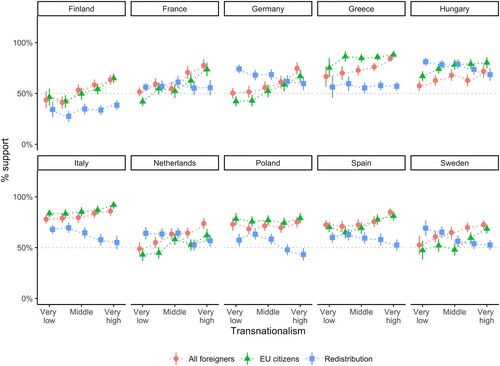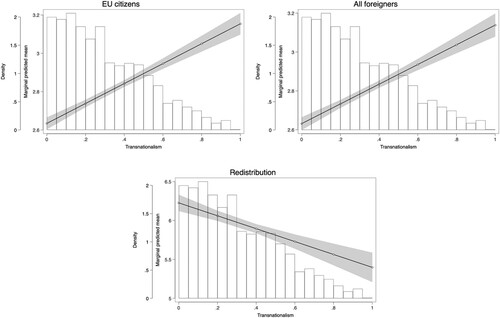Figures & data
Figure 1. Support for different types of solidarity in ten EU countries.
Notes: The figure reports the share of respondents agreeing with solidarities with 95% C. I., ordered by support for general redistributive solidarity and computed with post-stratification weights. The variables were recoded into binary variables to ease presentation. Mobility-related solidarities were coded 0 for answers ‘Somewhat disagree’ and ‘Strongly disagree’ and as 1 for ‘Somewhat agree’ and ‘Strongly agree’; redistribution as 0 (Against redistribution/Neutral) if answers ranged between 5 and 10 and as 1 if they ranged between 0 and 4 (In favour). Source: REScEU survey.

Table 1. Operationalization of individual transnationalism in EU10 countries.
Figure 2. Average transnationalism in the 10 EU countries surveyed.
Note: Country averages. Source: REScEU survey.

Figure 3. Support for solidarity across levels of transnationalism.
Notes: The figure reports average weighted percentages (markers) with 95% confidence intervals (lines). See the note in for details regarding the dichotomization of the three variables.

Figure 4. Standardized estimates for transnationalism and support for redistribution and mobility-related solidarities with correlated errors.
Note: Standardized coefficients from models in and Table H of the Online Appendix.

Table 2. Standardized coefficients of direct effects from the structural equation model.
Table 3. Standardized effects of transnationalism and redistribution on mobility solidarities with correlated residuals.

